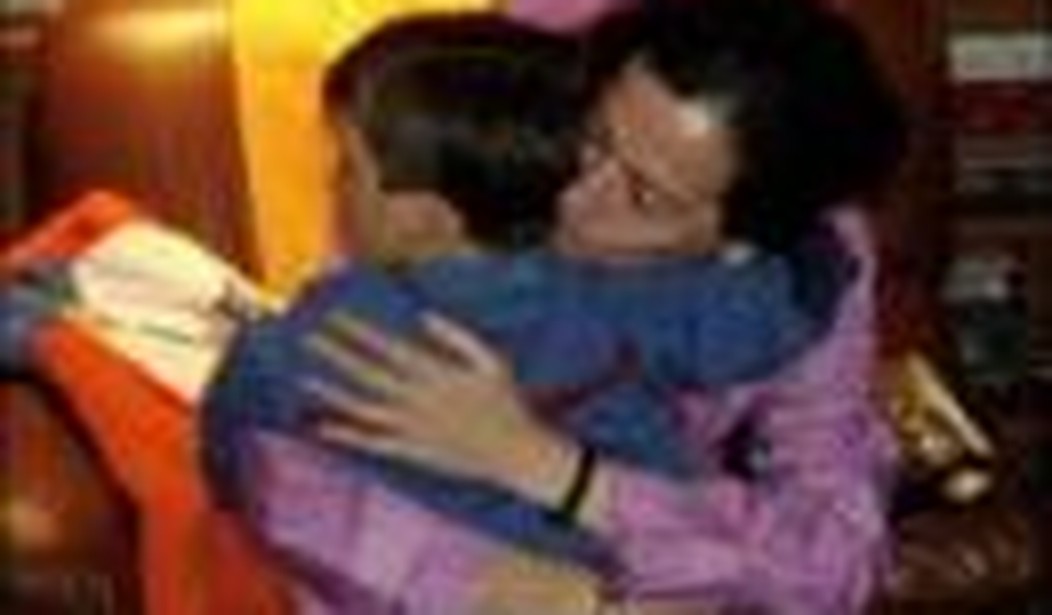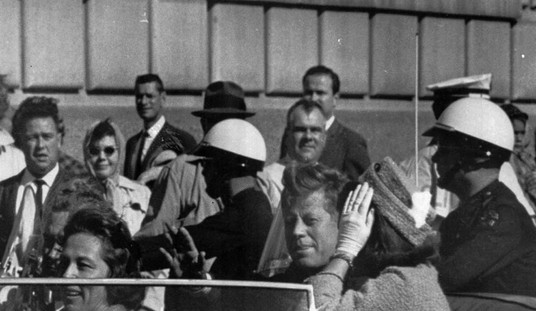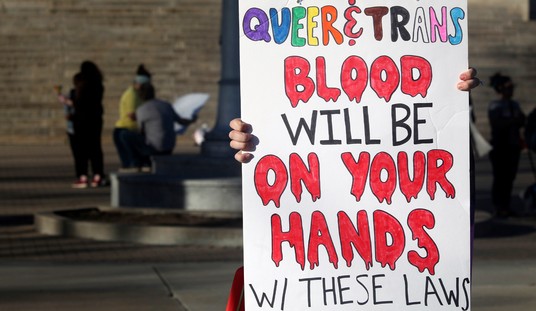In the end, the FARC hostage rescue operation organized with great fanfare by Venezuelan president Hugo Chavez was not an utter hoax, as it originally appeared.
In fact, the much-hyped Christmas rescue, set to be immortalized by Hollywood director Oliver Stone, failed because the FARC was unable to locate 3¬Ω year old Emmanuel, born in captivity to hostage Clara Rojas, who had been slated to star as the centerpiece of the operation – that was corrected this week, when the mother-son reunion finally took place.
A more modest second try on January 10th worked. Clara Rojas and Consuelo Gonzalez are now reunited with their families who were still waiting for them in Venezuela, never losing faith in Chavez.
This story, widely covered in France because of the interest in the yet-to-be released third hostage, Franco-Colombian Ingrid Betancourt, drew far less attention in the U.S., despite the Hugo Chavez connection.
Contrary to French media reports aired earlier on rescue day, the hostages appeared healthy, well-fed, and stable. Without minimizing the damage suffered in more than six years of captivity under grueling jungle conditions, their appearance was a far cry from what had been expected: a partially paralyzed Gonzales, reportedly victim of a ruptured aneurysm, and a deeply depressed Rojas, distressed by the separation from her child.
French TV rebroadcast Venezuelan footage of the jungle handover: The newly released hostages embraced International Red Cross personnel and armed FARC officials alike. They called Chavez by satellite telephone to thank him profusely. The Venezuelan Interior Minister tapped the guerrillero officer on the shoulder. Compared to the emaciated Franco-Colombian Ingrid Betancourt, her sisters of misfortune look fit and well-fed. It has been reported that the two women walked with their captors for 20 days to reach the meeting place. One wonders how long it took the Colombian narco-guerillas to get them back in shape before releasing them.
Betancourt’s ex-husband Fabrice Delloye, their children, and her sister Astrid were solicited for comments. Praise for Hugo Chavez always came first, followed by a short or a longer list including Colombia’s President Uribe, Sarkozy, the international community and, occasionally, the American government. But the most exuberant praise was reserved for Chavez :”reliable, humanitarian, democratic, generous, devoted, and the example to follow” in hostage liberation strategy.
For Delloye, interviewed on France 3 TV, the liberation proves the FARC keep their promises. Chavez, Uribe, Sarkozy, and the U.S. worked together to make this happen. “I hope Uribe will understand that the time has come to make a humanitarian gesture.” Asked “what sort of gesture,” he garbled something about convincing the FARC that a humanitarian solution is possible… and the Colombian government, while continuing to combat the guerilla movement, could work toward an agreement. Ingrid’s sister Astrid, interviewed on TF1, congratulated Chavez for his “extraordinary mediation” and praised the “international community” that had worked for six years to bring back the captives.
Background was provided with archive images of the FARC, one of the oldest guerilla movements; originally Marxist, they now deal in narcotics, stolen goods, kidnapping… none of which was visible in jungle scenes where the heavily armed combatants look like movie extras. Uribe, on the other hand, is described as “obsessed” with the idea of defeating them once and for all.
Video footage of Betancourt and Rojas shortly before their capture in 2002 is repeatedly shown to illustrate their determination to carry their Green party presidential campaign into FARC territory.
In a press conference in Venezuela, Clara Rojas–who was separated from Ingrid Betancourt in 2004–and former congresswoman Consuelo Gonzalez described the dreadful conditions endured by the male hostages, held with chains around the neck day and night. Rojas called the FARC criminals, guilty of “l√®se-humanity.” Gonzalez nevertheless argues for a “humanitarian” solution.
How many hostages remain in the hands of the guerillas? Approximately 50-now 48-“political” prisoners and anywhere from 700 to 3,000 “miscellaneous.” And what would be the “humanitarian gesture’? Beyond the typical lopsided prisoner exchange–50 captives for 500 combatants jailed in Colombia– the FARC are demanding a vast “demilitarized” zone in which to frolic without being hassled by the “obsessed” Uribe’s troops.
A former Agence France Presse correspondent in Colombia, interviewed on French radio pointed out that the FARC had already benefited from a “demilitarized” zone as big as Switzerland between 1999-2002. But the demilitarization only applied to government forces. The guerillas had roamed freely, dealt in drugs, harbored thousands of stolen cars, and thousands of captives. The FARC, he said, make extravagant demands, and give little in return. He warns that they won’t be liberating Ingrid Betancourt any day soon.
The saga of Emmanuel, the child born of a consensual relation between captive Carla Rojas and a FARC combatant, highlights FARC cruelty.
Le Figaro ran an exclusive interview with the peasant to whom the child was entrusted after being taken away from his mother at the age of eight months.
In January 2005 a guerrillero couple handed the baby over to the peasant, Jos√© Crisanto G√≥mez, a cocaine farmer living in an area under their control, whose father is a healer. Relations with the guerilla deteriorated when G√≥mez objected to efforts to indoctrinate his 8 year-old son. He moved with his five children and the FARC baby, named Juan David “after his father,” to the provincial capital. He took the baby, who suffered from an untreated fracture of the arm, to a clinic where personnel took custody, suspecting chronic abuse, and later placed him in a Bogota orphanage.
G√≥mez had told the FARC the child was with his sister in Bogota. When they tried to get him back for the imminent liberation and discovered he’d been turned over to an orphanage, they threatened to kill G√≥mez. The terrified peasant contacted the police, told them the whole story. He and his family are now under police protection.
Happy ending! Emmanuel will soon be reunited with his mother. Consuelo Gonzales hugs her adorable grandchildren.
The liberated FARC prisoners were handed over to Chavez; they are now his hostages, exploited to whitewash his reputation, camouflage his machinations, disguise the mistreatment of his own people, and pressure authorities to liberate the FARC from the consequences of their actions. Chavez wants them removed from the list of terrorist organizations. In a speech before his legislature, Chavez declared: “We must recognize the insurgents [FARC and the Castrist liberation army ELN] because they have a Bolivarian political project that we in Venezuela respect” [applause].
Ever since the mass Iranian kidnapping of US embassy personnel in 1979, Western nations have been treating hostage incidents one by one, without developing an overall strategy.
Some pay ransom, praise their captors, accept humiliation; some are released, others are beheaded; some– Israeli soldiers, for example-are neglected by the international community, others are worshipped. Hostages have been held for years in Lebanon, pro-insurgent journalists in Iraq have been suspected of complicity, the whole story is rarely told.
Cruel hostage-takers abuse our respect for human life, play on our emotions, count on our moderation. If we executed prisoners instead of keeping them in jail, there would be no one to exchange. If we consistently refused to pay ransom, satisfy demands, grant legitimacy, negotiate…kidnapping would be less attractive.
That is not our way, not our solution. But we cannot sidestep the challenge and, at the very least, we should be able to distinguish a humanitarian gesture from a humanitarian gesticulation.









Join the conversation as a VIP Member